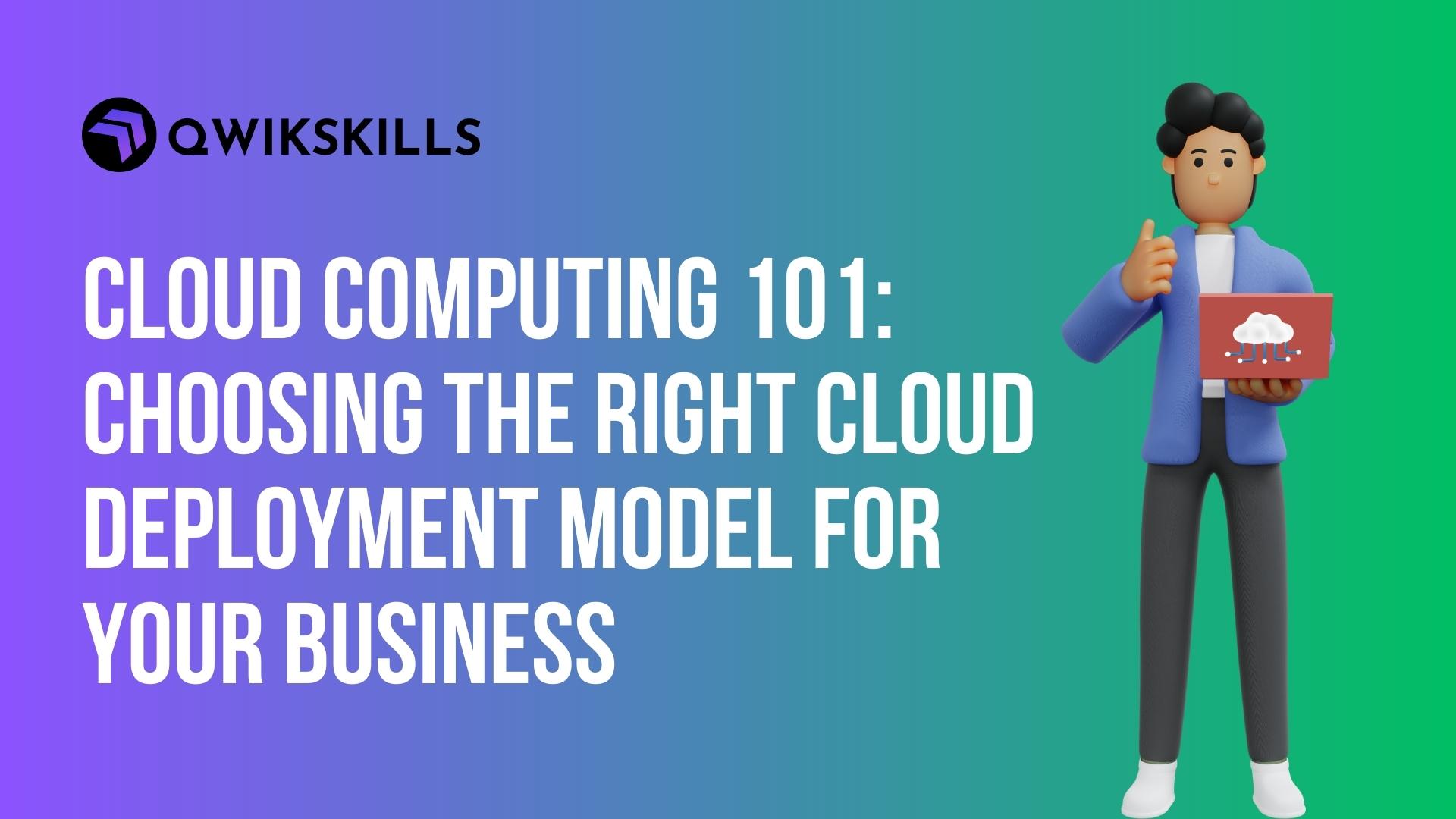In today’s digital landscape, cloud computing has become essential for businesses of all sizes. With a wide range of cloud deployment models available, it’s crucial to understand the options and select the one that aligns with your business needs. In this article, we will explore the fundamentals of Cloud Computing and provide valuable insights into choosing the right cloud deployment model for your business, brought to you by Qwikskills.
Understanding Cloud Computing
In this section, we’ll provide a brief overview of cloud computing and its benefits. We’ll discuss how cloud computing empowers businesses to streamline operations, enhance scalability, improve collaboration, and reduce costs. We’ll also explain the different cloud service models – Infrastructure as a Service (IaaS), Platform as a Service (PaaS), and Software as a Service (SaaS).
Overview of Cloud Deployment Models in Cloud Computing
Here, we’ll delve into the various cloud deployment models: public, private, hybrid, and multi-cloud. We’ll define each model, highlighting its unique characteristics and differences. By understanding the pros and cons of each model, readers will gain clarity on which one might be the best fit for their business.
Assessing Your Business Needs in Cloud Computing
To choose the right Cloud Certification, and cloud deployment model, evaluating your business requirements is essential. We’ll guide readers through the process of assessing their specific needs, considering factors such as data security, compliance regulations, scalability, and budget constraints. By leading an intensive investigation, organizations can settle on an educated choice
Public Cloud Deployment Model
In this section, we’ll focus on the public cloud model. We’ll discuss its features, advantages, and use cases. We’ll highlight industries that benefit from public cloud services and address potential concerns, such as data privacy and vendor lock-in. By understanding the public cloud’s capabilities, readers can determine if it aligns with their business goals.
Private Cloud Deployment Model
Here, we’ll explore the private cloud model. We’ll outline its characteristics, benefits, and scenarios where it is preferable. We’ll also discuss the challenges associated with implementing a private cloud, including infrastructure costs and maintenance. Businesses can decide if a private cloud suits their specific needs by weighing the pros and cons.
Hybrid Cloud Deployment Model
This section will focus on the hybrid cloud model. We’ll explain how a hybrid approach combines the benefits of public and private clouds, offering flexibility and scalability. We’ll discuss use cases where a hybrid cloud is suitable and highlight considerations for integration and management. Readers will gain insights into leveraging the hybrid cloud effectively.
Multi-cloud Deployment Model
In this section, we will analyze the benefits and drawbacks of using a multi-cloud approach. Advantages include dodging vendor lock-in and increasing service variety. On the other hand, difficulties such as data integration and complexity may arise. By understanding the benefits and challenges, readers can assess if a multi-cloud approach aligns with their business objectives.
Making the Right Choice for Your Business
Here, we’ll summarize the key points from each deployment model discussed. We’ll provide practical guidance on selecting the most appropriate cloud model based on business needs, emphasizing the importance of aligning the model with organizational goals and requirements. We’ll also offer tips for smooth implementation and transition to the chosen deployment model.
Conclusion
Choosing the right cloud deployment model is a critical decision for any business embracing cloud computing. By understanding the fundamentals of cloud computing, evaluating business needs, and considering the various deployment models, organizations can make informed choices. At QwikSkills, we provide expert guidance and support to help businesses navigate the complexities of cloud computing and select the ideal deployment model for their success.




